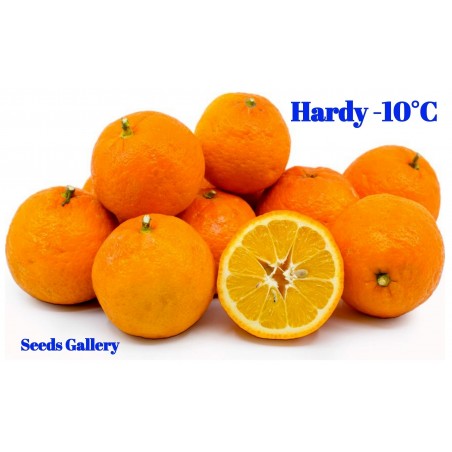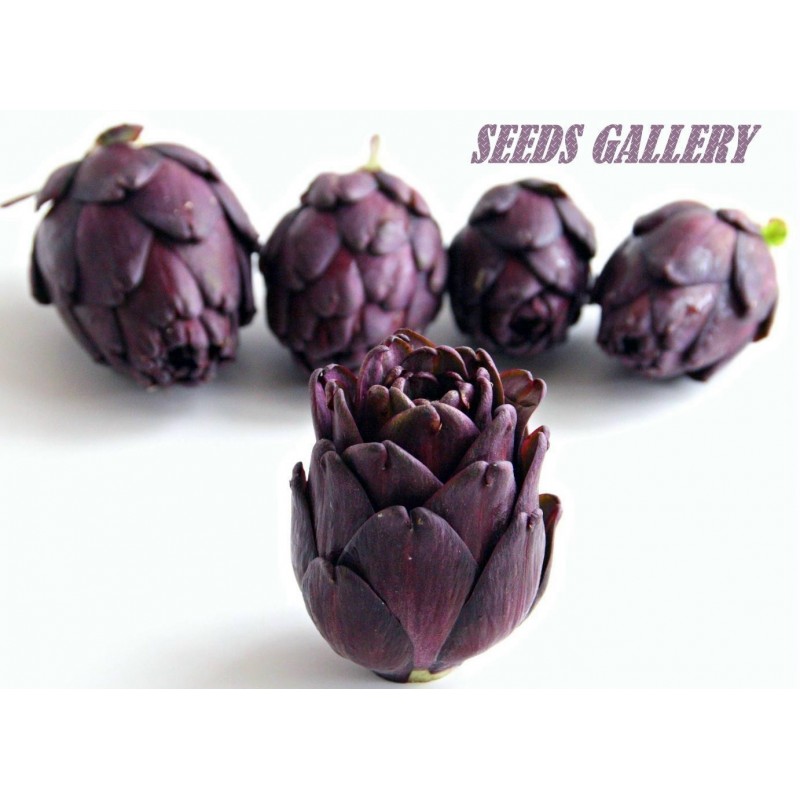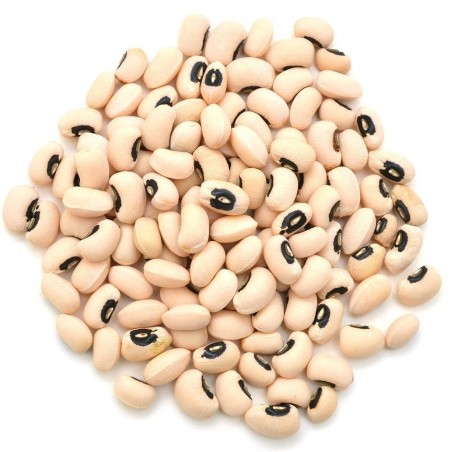
Nasiona Karczoch zwyczajny VIOLET DE PROVENCE
Nasiona Karczoch zwyczajny VIOLET DE PROVENCE
Cena za pakiet +-20 (1g) nasion.
Karczoch „Violet de Provence” jest jednym z najbardziej tradycyjnych włoskich warzyw. Jest znany pod różnymi nazwami, w tym Violetta di Provenza i Poivrade. Ten pyszny karczoch średniej wielkości rozwija bogate fioletowo-fioletowe kule na roślinach podobnych do ostu.
Nasiona Karczoch zwyczajny VIOLET DE PROVENCE
Cena za pakiet +-20 (1g) nasion.
Karczoch „Violet de Provence” jest jednym z najbardziej tradycyjnych włoskich warzyw. Jest znany pod różnymi nazwami, w tym Violetta di Provenza i Poivrade. Ten pyszny karczoch średniej wielkości rozwija bogate fioletowo-fioletowe kule na roślinach podobnych do ostu.
Wysiewać od marca do sierpnia, a zbiory od maja do lipca. Rośliny zachowują wydajność przez co najmniej trzy lata.
Niewiele potraw jest tak satysfakcjonujących, jak karczoch. Zanurz liście w ciepłym sosie balsamiczno-bekonowym i zakochaj się w małym ostu!
Sowing:
Sow under glass February to March or sow outdoors once the soil has warmed for cropping the following year. Sow the seeds at a depth of 6mm (¼in), they should germinate in 10 to14 days.
Transplant in June to crop in autumn and the following May. They need a position that receives eight hours or more sun per day.
Seed sown outdoors flowers the year after sowing. Sow direct when the soil has warmed up in mid spring for cropping the following year. Sow in free draining soil, 2 to 3 seeds in stations 30cm (12in) apart. Thin out so that there is one good plant every 60cm (24in). The thinnings can be transplanted.
Artichokes need constant moisture: water well. They thrive in moderate climates near the sea where the soil has a high salt content. Seaweed is said to be the best fertiliser possible for these plants.
Cultivation:
Keep the plants well watered until established. Apply a mulch around the stems in May. During the summer months hoe regularly and apply a liquid fertiliser at fortnightly intervals. Water thoroughly when the weather is dry. In late autumn cut down the stems and cover the crowns with bracken, leaves or straw. Remove this protective covering in April.
Harvesting:
Artichokes come in different sizes: baby, medium, and jumbo. All three sizes grow on the same plant. The jumbo grows on the centre stalk, the medium grow on the sides, and the babies at the base. They are not merely immature globes. The globes are harvested before the blossoms open to ensure the best flavour.
The size of a mature artichoke is dependent upon its placement on the plant. Those at the top can be enormous while those at the base, shaded by dense leaves, may grow no larger than a ping-pong ball.
As soon as the petals begin to open, they are overripe, no matter the size. After harvesting the main head, secondary heads will appear and these too can be used.
Expected yield per mature plant: 10 to 12 heads. Productive life: 4 years
Storing:
Artichokes can be stored briefly in plastic bags to preserve their moisture content.
Rotation considerations:
Avoid following Jerusalem artichoke or sunflower.
Companion Planting:
Good companions: Sunflower and Tarragon.
Bad companions: None
Other Uses:
Artichokes provide wonderful shades of green when used as a natural dye.
Used in the garden they add structure and height to flower beds. In late summer they have beautiful violet-blue flowers.
Origin:
The origin of artichokes is unknown, though they are said to have come from the Maghreb (North Africa), where they are still found in the wild state; the seeds of artichokes, probably cultivated, were found during the excavation of Mons Claudianus in Egypt during the Roman period. Globe artichokes are known to have been cultivated at Naples around the middle of the 9th century.
The Dutch introduced artichokes to England, where they grew in Henry VIII's garden at Newhall in 1530.
Nomenclature:
The various names of the artichoke in European languages all ultimately come from Arabic al-kharshuf, through a Northern Italian dialect word, articiocco.
The Arabic term Ardi-Shoki which means "ground thorny" is a folk etymology of the English name.
The word Artichoke may also refer to:
The Cardoon, a related species.
Jerusalem artichoke, a species of sunflower
Chinese artichoke, a species of woundwort
Project Artichoke, a CIA operation
| HEIRLOOM ? | Yes |
|---|---|
| Organic Seeds ? | Organic Seeds |
| Organic/natural ? | Organic/Natural: Yes |
| Edible ? | Edible |
| Pretreatment of sowing ? | Soak in water before sowing 12-24 h |
| Sowing depth ? | Sowing depth 5 mm |
| Perennial ? | Perennial plant : Yes |
| Resistant to cold and frost ? | Resistant to cold and frost |
| Zbierane ręcznie nasiona? | Ręcznie zbierane nasiona |
| Plant is suitable for growing ? | The plant is suitable for growing in a greenhouse The plant is suitable for outdoors cultivation |
| Plant height ? | Plant height (about) 150 - 200 cm |
| Fruit Weight ? | Fruit Weight: 80 - 120 g |
| Origin Country of Variety ? | Variety from: Italy |
| Medicinal Plant ? | Medicinal Plant: Yes |
| Scientific name: | Cynara cardunculus var. scolymus |
| Sun Exposure ? | Full sun from an early age |
| Growth Rate ? | Fast Growth Rate |
| Type: | Vegetable Seeds |
| Nazwa zwyczajowa: | Artichoke |
| Planting Time? | Planting Time: Whole year-round |
| Indoor/Outdoor? | Indoor/Outdoor: Outdoor |
| Soil Type? | Soil Type: Appropriate soil |
| Watering? | Watering: Medium |
| Cultivating Difficulty? | Cultivating Difficulty: Very easy |
| Climate? | It thrives in all climatic conditions |


Chwilowo nie możesz polubić tej opinii
Zgłoś komentarz
Zgłoszenie wysłane
Twoje zgłoszenie nie może zostać wysłane
Napisz swoją opinię
Recenzja została wysłana
Twoja recenzja nie może być wysłana
🌍 Wysyłka na cały świat z UE
Wysyłamy zamówienia na cały świat z Unii Europejskiej za pośrednictwem poczty poleconej z potwierdzeniem odbioru.
📦 Śledzenie przesyłki
Aby śledzić przesyłkę, zaloguj się na swoje konto i przejdź do sekcji Historia zamówień > Szczegóły, gdzie znajdziesz numer śledzenia.
Śledzenie międzynarodowe: 17Track
Dla numerów takich jak RGxxxxxxHR: Śledzenie Posta.hr
🕒 Uwaga: informacje o śledzeniu pojawią się dopiero po 24 godzinach od nadania.
⚠️ Ważne uwagi
Płatność za pobraniem nie jest możliwa.
Sprawdzaj folder SPAM / Niechciane w swojej skrzynce e-mail, aby nie przegapić powiadomień.
Korzystaj wyłącznie z formularza kontaktowego na naszej stronie.
Wiadomości wysłane bezpośrednio na e-mail mogą nie zostać odebrane.
📱 Numer telefonu wymagany
Podczas składania zamówienia koniecznie podaj numer telefonu komórkowego z kodem kraju.
Przykład: +48 123 456 789
🚚 Warunki dostawy
Dla przesyłek poleconych wymagany jest podpis odbiorcy (osoby, do której adresowana jest paczka).
Nie zamawiaj, jeśli:
chcesz, aby paczka została dostarczona do skrzynki pocztowej
nie będzie Cię w domu w czasie doręczenia
chcesz, by paczka została zostawiona u sąsiada (❌ to niemożliwe)
📬 Podanie adresu skrzynki pocztowej oznacza utratę prawa do zwrotu w razie zagubienia przesyłki.
↩️ Zwrot paczki i ponowna wysyłka
Jeśli paczka zostanie zwrócona do nas z jakiegokolwiek powodu:
Pokrywasz koszt zwrotu 2 €
Oraz koszt ponownego nadania
⏱ Opóźnienia i śledzenie
Jeśli śledzenie wskazuje, że paczka wciąż jest „u nadawcy”, oznacza to, że jest w transporcie.
Skontaktuj się z lokalnym urzędem pocztowym, podając numer śledzenia.
Nie jesteśmy firmą kurierską – nie mamy możliwości monitorowania przesyłek za klientów.
Nie ponosimy odpowiedzialności za czas dostawy.
🔍 Reklamację zagubionej paczki możemy rozpocząć dopiero po 30 dniach od daty wysyłki.
✈️ Opcje wysyłki
| Typ wysyłki | Czas realizacji | Ubezpieczenie | Możliwe opóźnienie | Uwagi |
|---|---|---|---|---|
| Standardowa | 7–10 dni roboczych | ❌ | 7–14 dni | Najtańsza opcja |
| Priorytetowa | 1–7 dni roboczych | ❌ | 3–10 dni | Zamówienie przetwarzane priorytetowo, ale nie szybciej |
| Ubezpieczona | 1–7 dni roboczych | ✅ | 3–10 dni | Zwrot kosztów w przypadku zagubienia paczki (do 150 €) |
🕒 Szacowany czas dostawy:
W obrębie Unii Europejskiej: 3–20 dni roboczych
Globalnie: 5–30 dni roboczych
Przykładowe dostawy do USA: 27, 22, 19, 17, 13 dni
💳 Metody płatności
💶 Przelew bankowy (SEPA / IBAN / SWIFT-BIC)
W opisie przelewu koniecznie podaj numer zamówienia (np. SGS-19811702).
Brak opisu może spowodować opóźnienie lub anulowanie zamówienia.
Jeśli płatność nie zostanie zaksięgowana w ciągu 7 dni – zamówienie zostanie anulowane.
🅿️ PayPal
Akceptujemy płatności wyłącznie w euro.
Ustaw walutę na euro podczas płatności.
💳 Karta płatnicza
Płatności kartą odbywają się przez naszą stronę: Exotic Seeds Store
Akceptujemy: Visa, MasterCard, American Express, Diners Club, UnionPay, JCB, Discover i inne.
💡 Klient ponosi wszelkie opłaty transakcyjne.
Aby przyspieszyć realizację zamówienia, prześlij potwierdzenie przelewu.
📅 Dodatkowe uwagi
Nie przetwarzamy zamówień ani nie wysyłamy paczek w soboty i niedziele.
Przed złożeniem zamówienia sprawdź ogłoszenia na naszej stronie (np. przerwy świąteczne lub specjalne warunki).
📫 Uwaga:
Nie wysyłaj wiadomości e-mail. Używaj wyłącznie formularza kontaktowego dostępnego na naszej stronie.
Related Products















